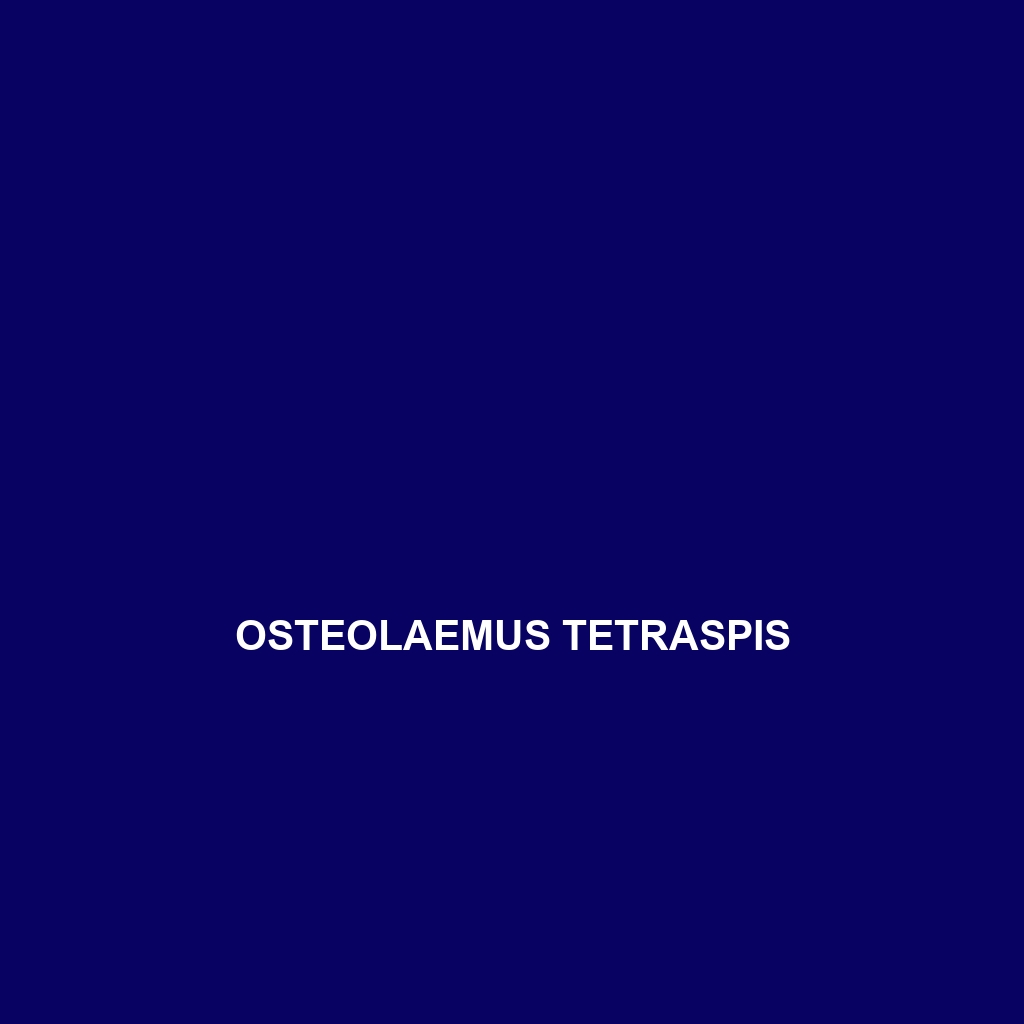Common Name
Osteolaemus tetraspis
Scientific Name
Osteolaemus tetraspis
Habitat
Osteolaemus tetraspis, commonly known as the African Dwarf Crocodile, primarily inhabits the tropical rainforests, swamps, and freshwater habitats of West and Central Africa. This species is typically found in rivers, streams, and small lakes where dense vegetative cover provides protection from predators and serves as a breeding ground. The African Dwarf Crocodile thrives in humid climates with abundant vegetation, making rainforests the most favorable environments. In addition to rainforests, it may also occupy savannas and floodplains, showcasing its adaptability to various marine habitats and varying degrees of wetland environments.
Physical Characteristics
Osteolaemus tetraspis displays a unique set of physical traits that distinguish it from other crocodilian species. Adult African Dwarf Crocodiles typically grow to be about 1.5 to 1.9 meters (5 to 6.2 feet) in length, making them one of the smallest crocodile species. Their bodies are robust and relatively short, with a broad snout conducive for catching fish and crustaceans. The skin is a dark olive green to brown color, adorned with distinctive, irregular black markings. Another distinguishing feature is their heavily armored body, covered with bony plates called osteoderms, which serve as protection against predators. Additionally, the eyes are positioned on the top of their heads, allowing them to remain mostly submerged while keeping a watchful eye on their surroundings.
Behavior
Typically a nocturnal species, Osteolaemus tetraspis exhibits interesting behavior patterns that command attention. During the day, they often remain hidden among the dense vegetation or submerged in water to avoid detection. At night, they emerge to hunt and forage. This species is known for its solitary nature, although individuals may be found basking together at times. Their mating rituals involve elaborate courtship displays, including vocalizations, splashing, and even physical displays of dominance. Furthermore, African Dwarf Crocodiles are known to exhibit territorial behaviors, especially during the breeding season, often marked by aggressive displays towards intruders.
Diet
Osteolaemus tetraspis is primarily a carnivore, with a diet focused on fish, amphibians, crustaceans, and occasionally small mammals. Their hunting technique typically involves using stealth to ambush prey from beneath the water’s surface or among aquatic plants. They are also known for their opportunistic feeding habits, consuming various available food sources in their environment. Their powerful jaws and sharp teeth allow them to catch and consume prey effectively. Although predominantly carnivorous, they have been observed scavenging, showcasing a flexible feeding strategy indicative of their adaptability to changing food availability.
Reproduction
The reproductive cycle of Osteolaemus tetraspis involves interesting behaviors and specific environmental cues. Mating occurs during the rainy season, typically from April to June, when water levels rise, and food is abundant. After courtship, females lay between 10 to 20 eggs in nests made of vegetation and mud near riverbanks. The gestation period lasts approximately 70-100 days, after which the hatchlings emerge and are cared for by the mother. Unlike many other crocodilian species, maternal investment in this species is notable; mothers are protective of their young and may carry them to the water to ensure their safety and survival.
Conservation Status
The conservation status of Osteolaemus tetraspis is classified as vulnerable according to the International Union for Conservation of Nature (IUCN). Threats leading to their decline include habitat destruction due to deforestation, pollution of water bodies, and hunting for skin and meat. Conservation efforts are underway in various regions, emphasizing habitat protection and legal measures against hunting. However, ongoing challenges require persistent efforts to ensure the long-term survival of this unique species.
Interesting Facts
Despite its small size compared to other crocodilian species, Osteolaemus tetraspis has some fascinating adaptations. Known for its relatively docile nature, it is less aggressive than larger crocodiles; however, it can still be quite territorial. Moreover, African Dwarf Crocodiles have a highly developed sense of hearing and can produce a range of vocalizations that signify alarm, mating calls, or territorial claims. They can also close their ears and nostrils when submerged, enhancing their hunting efficiency and allowing them to stay underwater for extended periods.
Role in Ecosystem
Osteolaemus tetraspis plays a critical role in its ecosystem as a predator and scavenger. As consumers at the top of the food chain, they help regulate fish populations and prevent overpopulation of certain species. Their foraging behaviors contribute to the health of aquatic ecosystems by assisting in nutrient turnover and maintaining a balanced ecosystem. Furthermore, as a predator, they have interactions with various species, ensuring a stable food web. Their nesting habits also provide enrichment for the surrounding soil environment, contributing positively to the biodiversity within their habitat.
